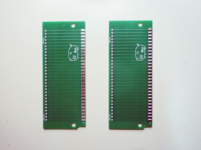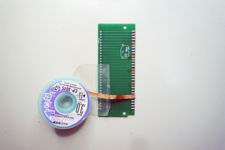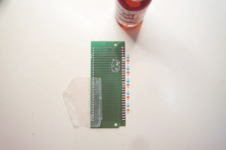jmacz
Well-known member
Hoping to hear from other members on their techniques to hold a third party ROM in place on an SE/30 (given the thinner PCB). This applies to the Rominator and others, in my case a SMC ROM.
I've seen the piece of paper and rubber band techniques. I'm currently using 3D printed clips I found online. But I think I'm still seeing issues from time to time.
I 've had some random crashes, mostly in random OS/ROM traps although a good number are during a Dequeue call. I was getting them consistently this morning (still random calls but consistently crashing) after I opened up the case to duplicate an SD card. Opening the case and running the machine without it is the only change. I remembered the ROM install being a little finicky and so on a whim, I decided to tilt the SE/30 at an angle to relieve pressure on the motherboard and all the crashes went away as long as I was holding the SE/30 that way.
Theoretically could be a bad trace, faulty solder joint, etc... but it wasn't doing this on the stock ROM so I am currently thinking it's due to the finicky contact of the ROM.
I'm currently using these clips:
I've seen the piece of paper and rubber band techniques. I'm currently using 3D printed clips I found online. But I think I'm still seeing issues from time to time.
I 've had some random crashes, mostly in random OS/ROM traps although a good number are during a Dequeue call. I was getting them consistently this morning (still random calls but consistently crashing) after I opened up the case to duplicate an SD card. Opening the case and running the machine without it is the only change. I remembered the ROM install being a little finicky and so on a whim, I decided to tilt the SE/30 at an angle to relieve pressure on the motherboard and all the crashes went away as long as I was holding the SE/30 that way.
Theoretically could be a bad trace, faulty solder joint, etc... but it wasn't doing this on the stock ROM so I am currently thinking it's due to the finicky contact of the ROM.
I'm currently using these clips:
Macintosh SE/30 ROM Clips by PotatoFi | Download free STL model | Printables.com
Trouble with your Macintosh SE/30 ROM SIMM not working? | Download free 3D printable STL models
www.printables.com



